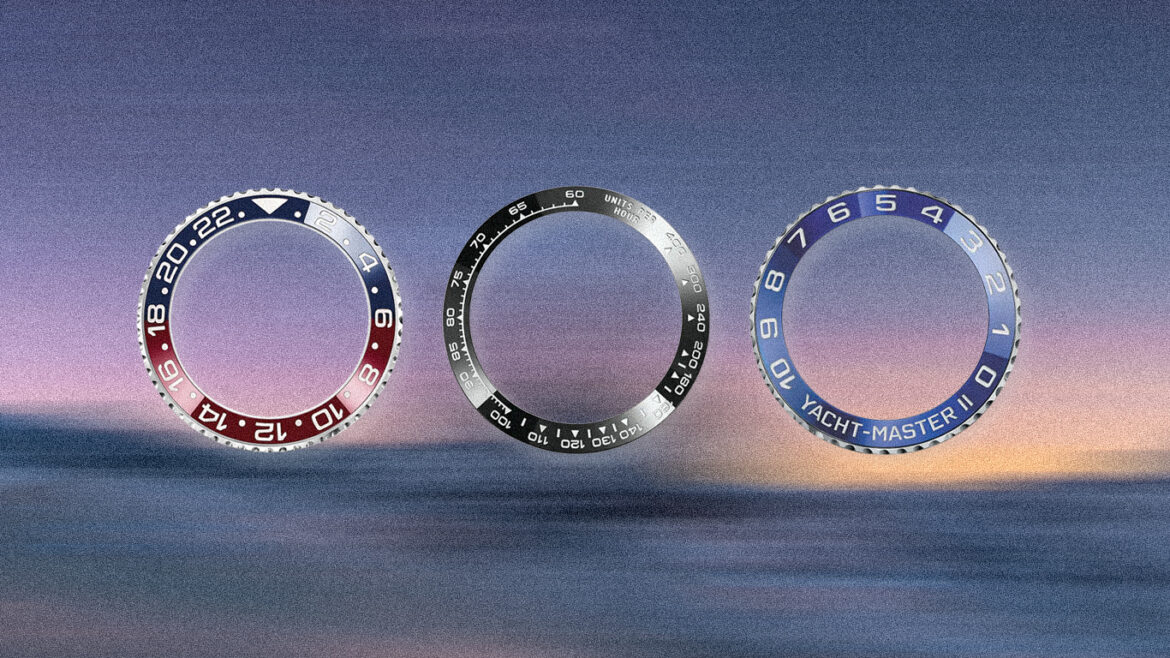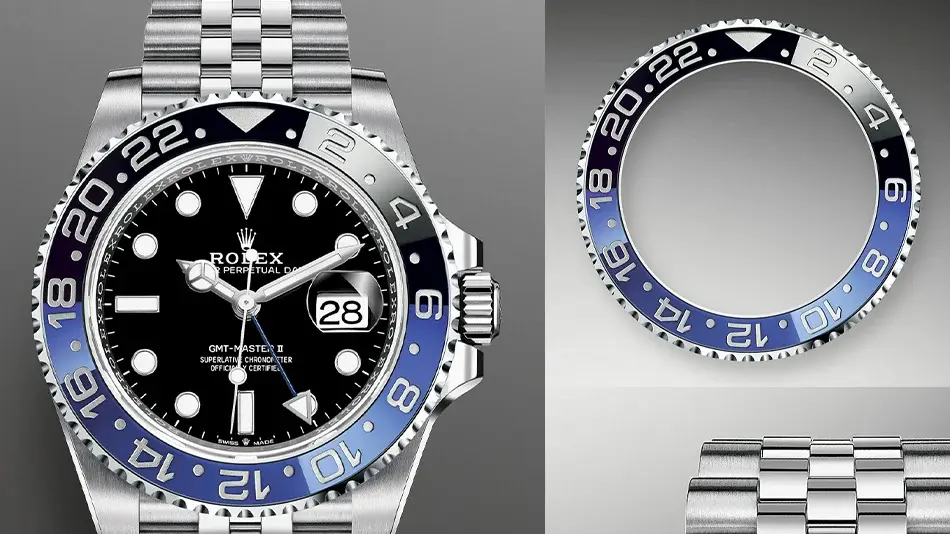Introduction
A watch bezel is not just a decorative ring that surrounds the watch face but an essential component that holds the crystal in place. In this section, we will delve into the definition, importance, and evolution of watch bezels.
Definition of a Watch Bezel
A watch bezel is a ring-shaped component that surrounds the watch face and holds the crystal in place. It is typically made of metal, although some bezels may be made of ceramic or other materials. The bezel is attached to the watch case and can either be fixed or rotated.
Fixed bezels are stationary and do not move, while rotating bezels can be turned to measure elapsed time or to perform other functions. Rotating bezels are commonly found on dive watches, where they are used to track the amount of time spent underwater. Some GMT watches also feature a bi-directional rotating bezel.
Importance of a Watch Bezel in Watch Functionality and Aesthetics

The watch bezel plays a crucial role in both the functionality and aesthetics of a watch. From a functional standpoint, the bezel helps to protect the watch crystal from scratches and other damage. It also helps to keep the watch face clean by preventing dirt and debris from getting inside the watch.
Moreover, the bezel can be used to add color, texture, and visual interest to a watch, making it an integral part of the watch’s design. It can also be used to highlight certain features of the watch, such as the date display or the chronograph function.
Brief History of Watch Bezels and Their Evolution Over Time
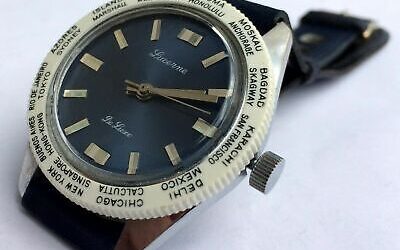
The history of watch bezels dates back to the early days of watchmaking. The first watches were made in the 16th century and were typically round in shape with a simple metal frame around the watch face.
As watchmaking technology evolved, so did the design of watch bezels. In the 19th century, watchmakers began to experiment with different shapes and materials for bezels. Some watches featured square or rectangular bezels, while others had bezels made of precious metals or adorned with gemstones.
In the 20th century, watch bezels became more functional, with the introduction of rotating bezels for dive watches and other specialized timepieces. Today, watch bezels continue to evolve, with new materials and designs being introduced all the time.
Different types of bezels
Watch bezels are an essential component of any timepiece. They not only add to the aesthetic appeal of the watch but also serve various functional purposes. In this section, we will explore the different types of watch bezels and their uses.
Fixed Bezels

Fixed bezels are the most common type of bezels found on watches. They are stationary and do not rotate like other types of bezels. Fixed bezels are usually made of metal or ceramic and are designed to protect the watch face. They are also used to enhance the watch’s appearance and provide a sleek, sophisticated look.
Unidirectional Bezels
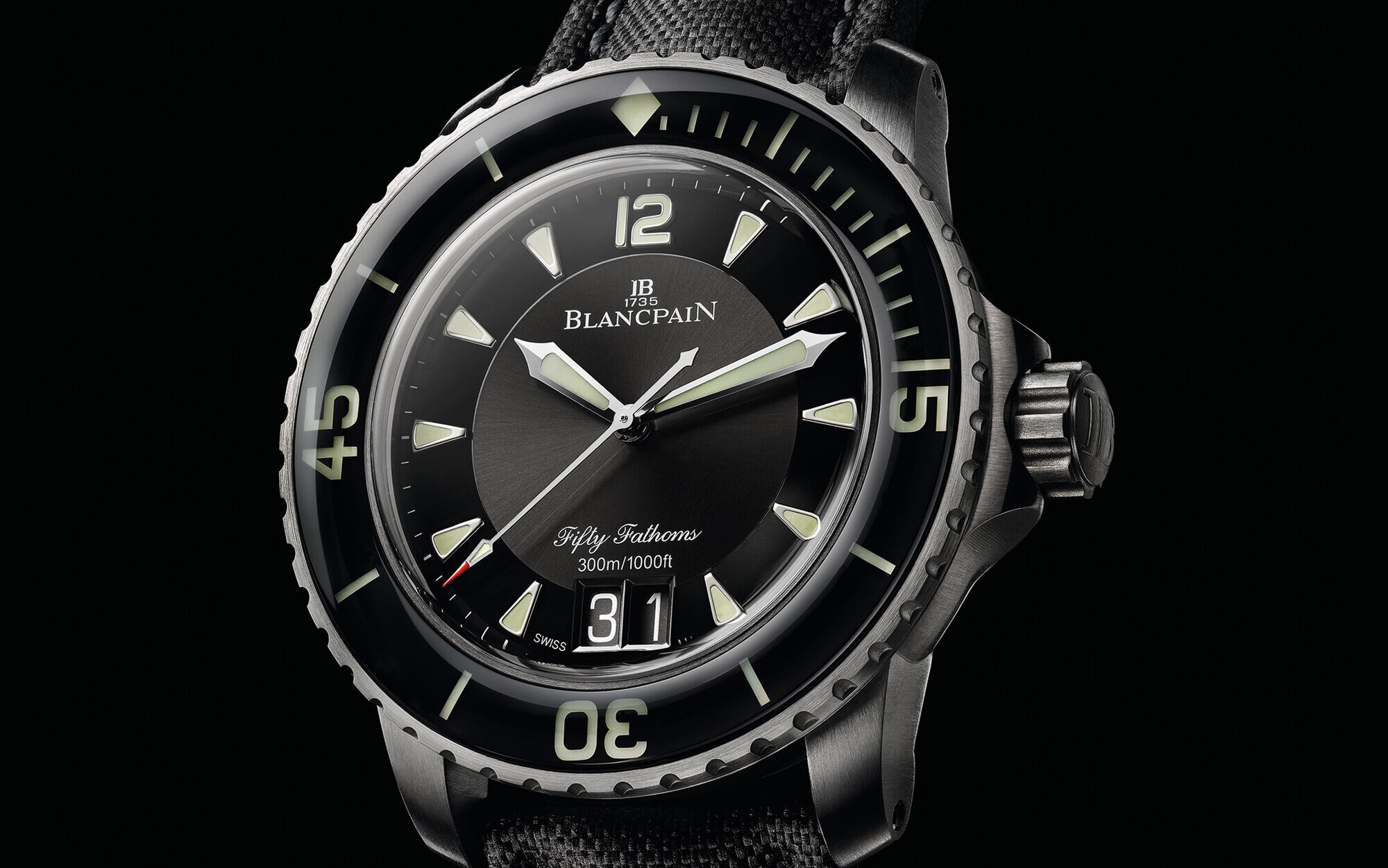
Unidirectional bezels are similar to rotating bezels, but they can only rotate in one direction. They are commonly found in dive watches and are used to measure elapsed time. The bezel is marked with numbers or markers that correspond to minutes, allowing the diver to easily track their time underwater. Unidirectional bezels are designed to prevent accidental movement that could cause the diver to believe they have more time than they actually do.
Bidirectional Bezels
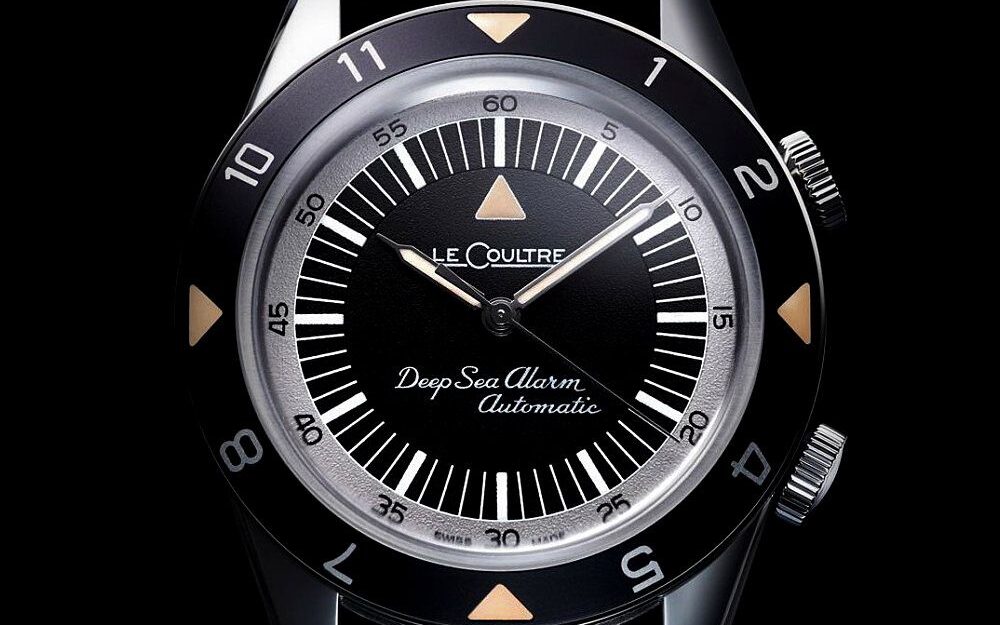
Bidirectional bezels are similar to rotating bezels, but they can rotate in both directions. They are commonly found in aviation watches and are used to measure elapsed time. The bezel is marked with numbers or markers corresponding to minutes, allowing the pilot to easily track their time in the air.
Tachymeter Bezels
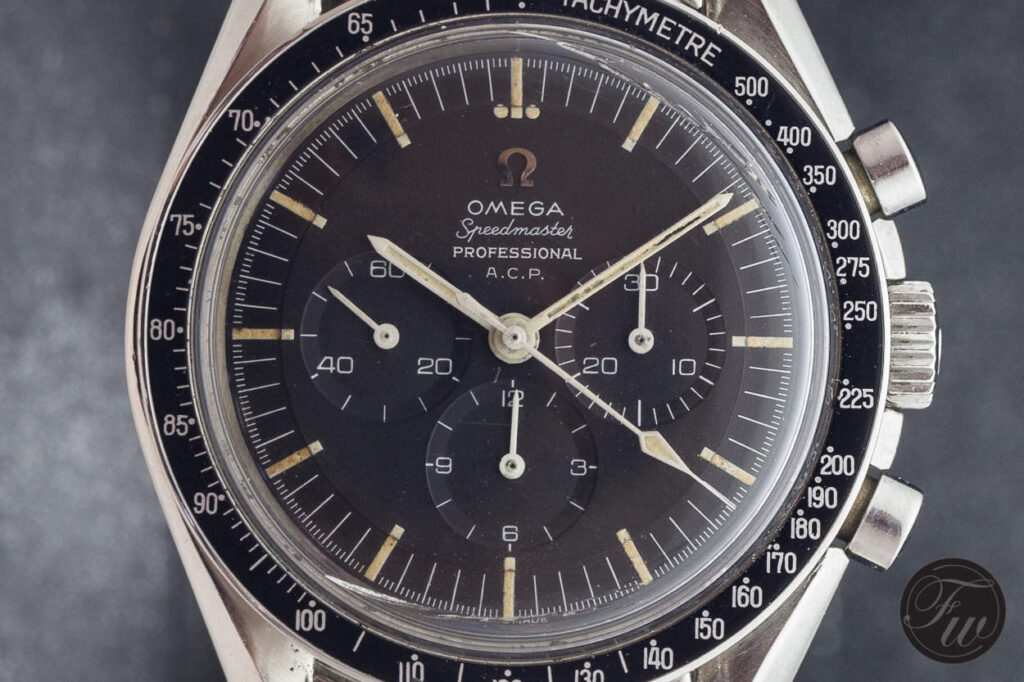
Tachymeter bezels are commonly found on chronograph watches. They are used to measure speed over a known distance. The bezel is marked with a scale that allows the wearer to measure speed in units per hour. To use the tachymeter bezel, the wearer starts the chronograph at the beginning of the known distance and stops it at the end. The position of the chronograph hand on the tachymeter scale indicates the speed in units per hour.
GMT Bezels
GMT bezels are commonly found on watches designed for travelers. They are used to display a second time zone. The bezel is marked with 24-hour markers that correspond to different time zones around the world. The wearer can set the bezel to the local time of their destination and easily track the time difference between their current location and their destination.
Countdown Bezels

Countdown bezels are commonly found on chronographs, pilot’s watches but can technically be put on any watch.
The difference from a Dive Bezel is that doesn’t feature a special indication for the first 20 min. and is usually not lumed. Most are rotating but some are fixed (wich does remove its purpose but some like the aesthetics).
Compass Bezels
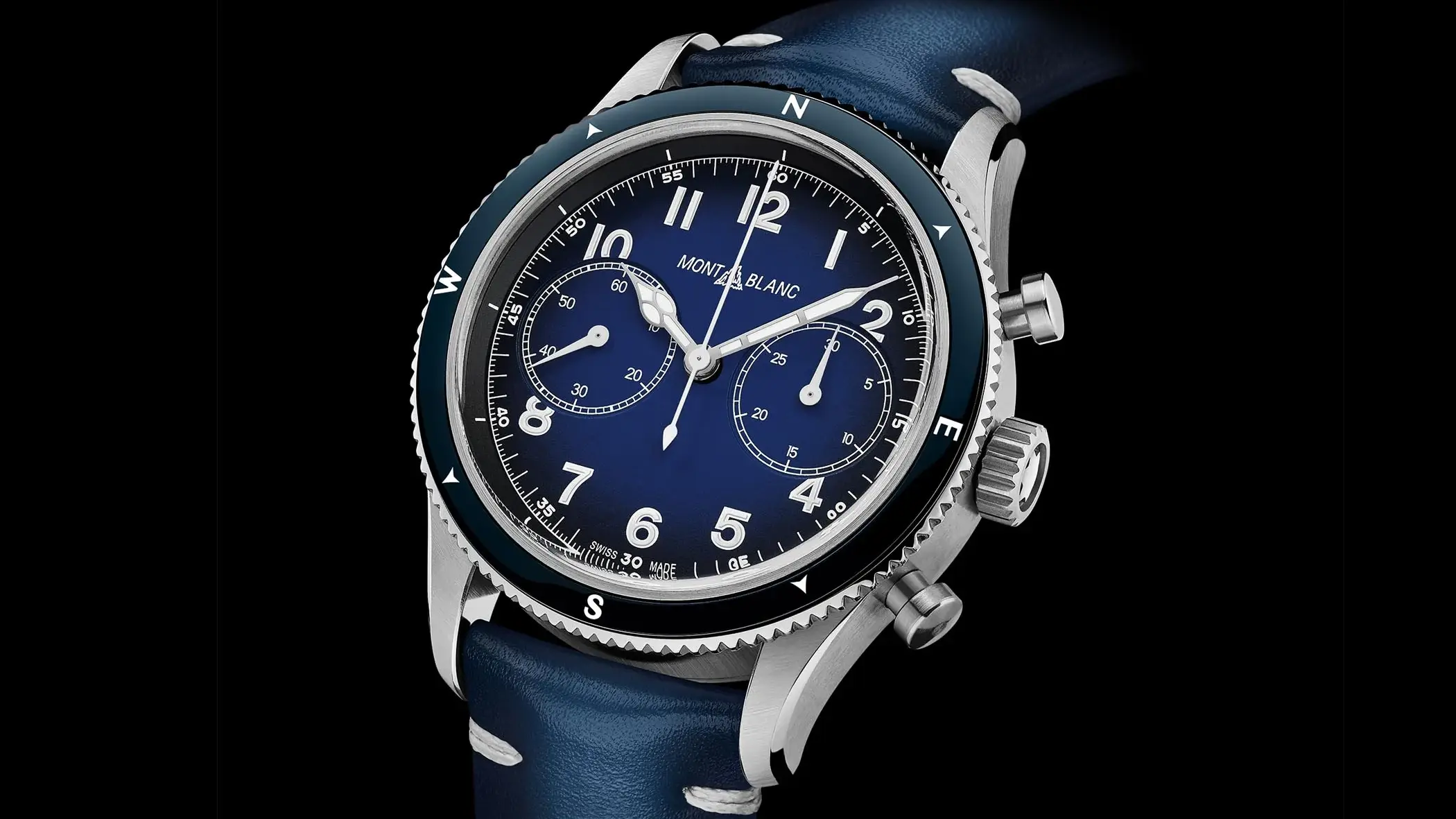
Compass bezels are commonly found on watches designed for outdoor enthusiasts. They are used to determine direction. The bezel is marked with 360 degrees, allowing the wearer to align the bezel with magnetic north and determine their direction.
This can be done using the hour hand and the sun. See how here.
Pulsometer Bezels
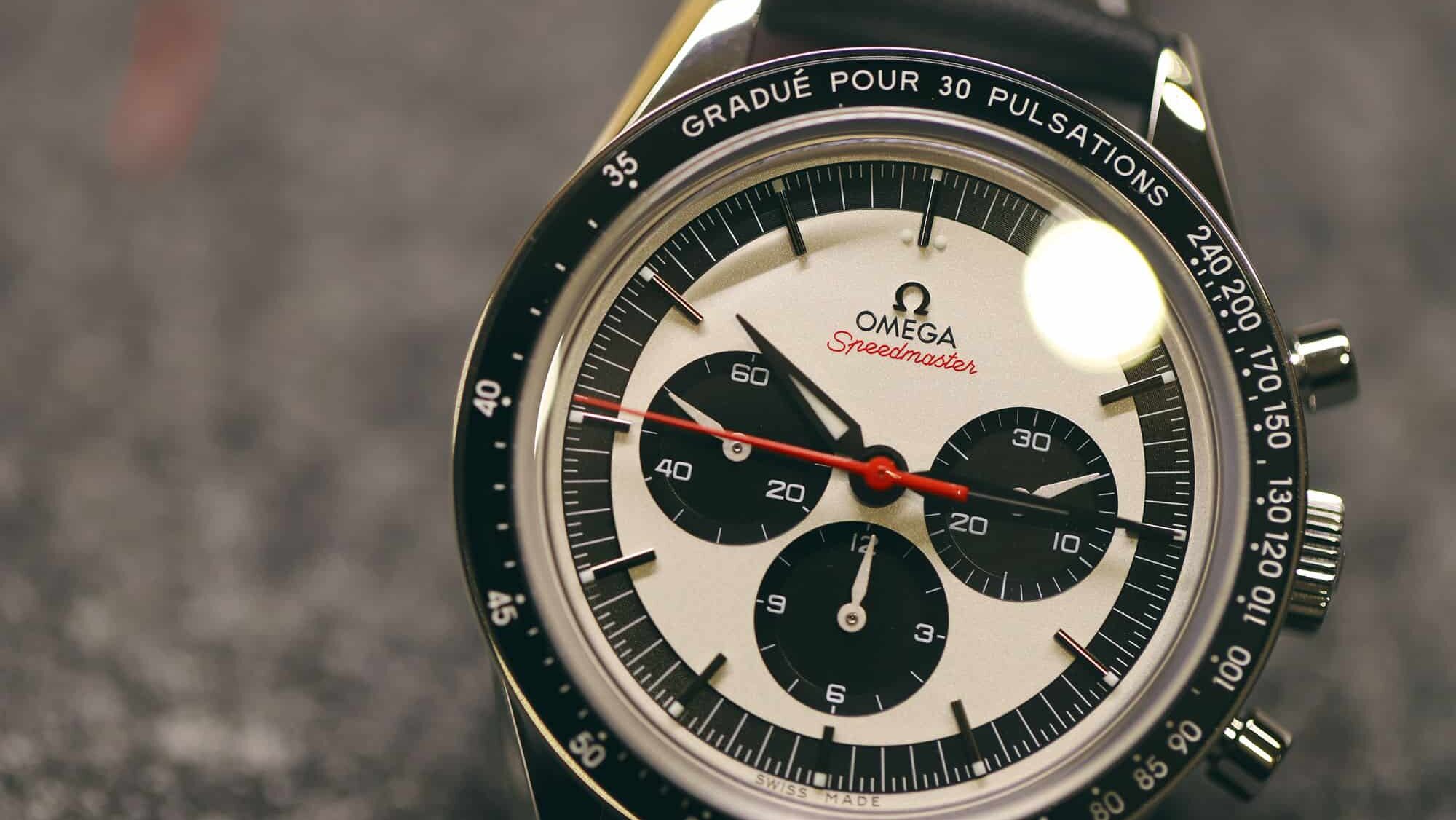
Pulsometer bezels are commonly found on watches designed for medical professionals. They are used to measure heart rate. The bezel is marked with a scale that allows the wearer to measure heart rate in beats per minute.
To use the pulsometer bezel, the wearer starts the chronograph and counts the number of heartbeats in a set amount of time. The position of the chronograph hand on the pulsometer scale indicates the heart rate in beats per minute.
Slide Rule Bezels
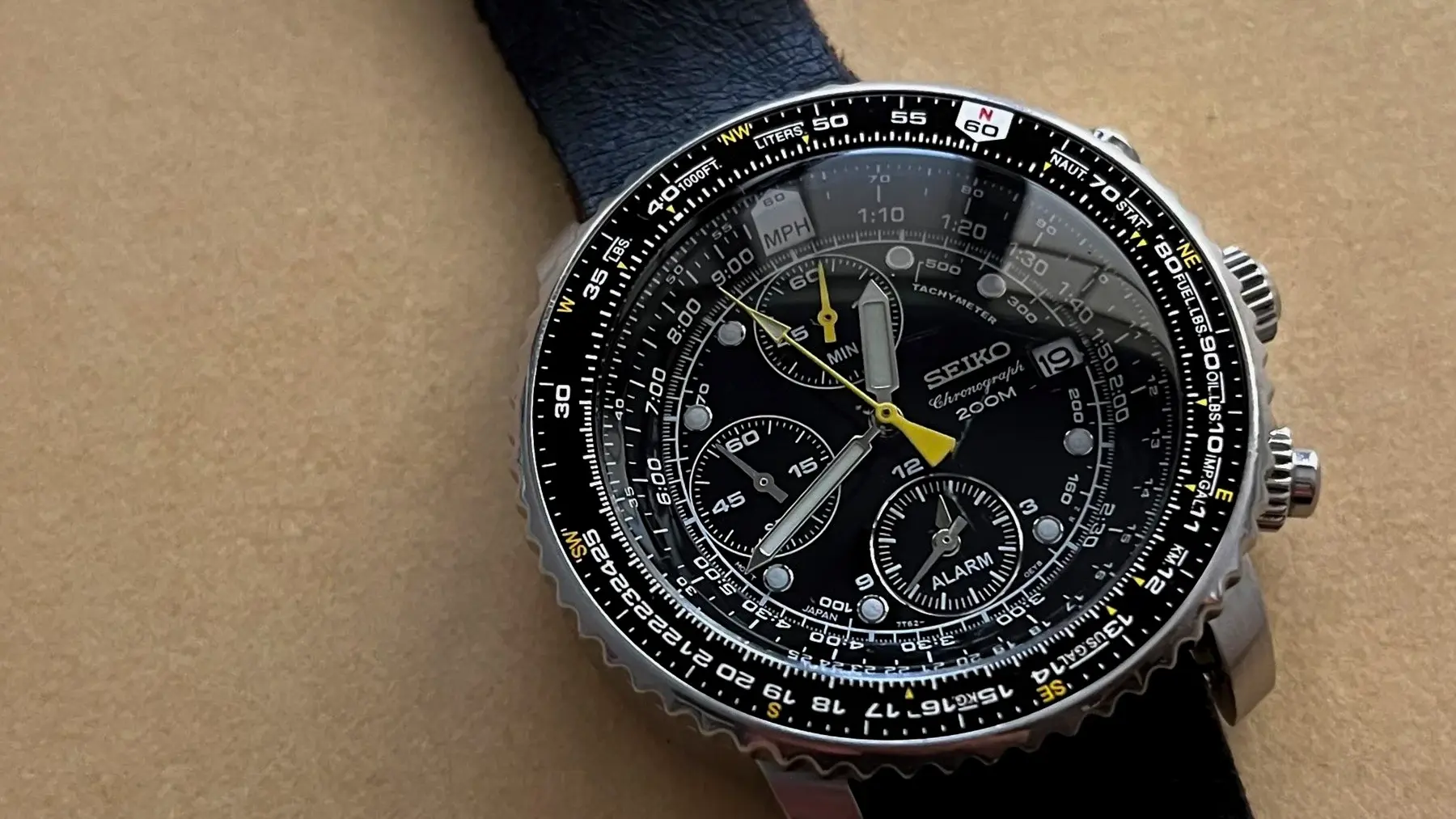
Slide rule bezels are commonly found on watches designed for pilots and engineers. They are used to perform mathematical calculations.
The bezel is marked with a logarithmic scale that allows the wearer to perform multiplication, division, and other calculations. To use the slide rule bezel, the wearer aligns the numbers on the outer and inner scales and reads the result on the scale between them.
Worldtimer bezels
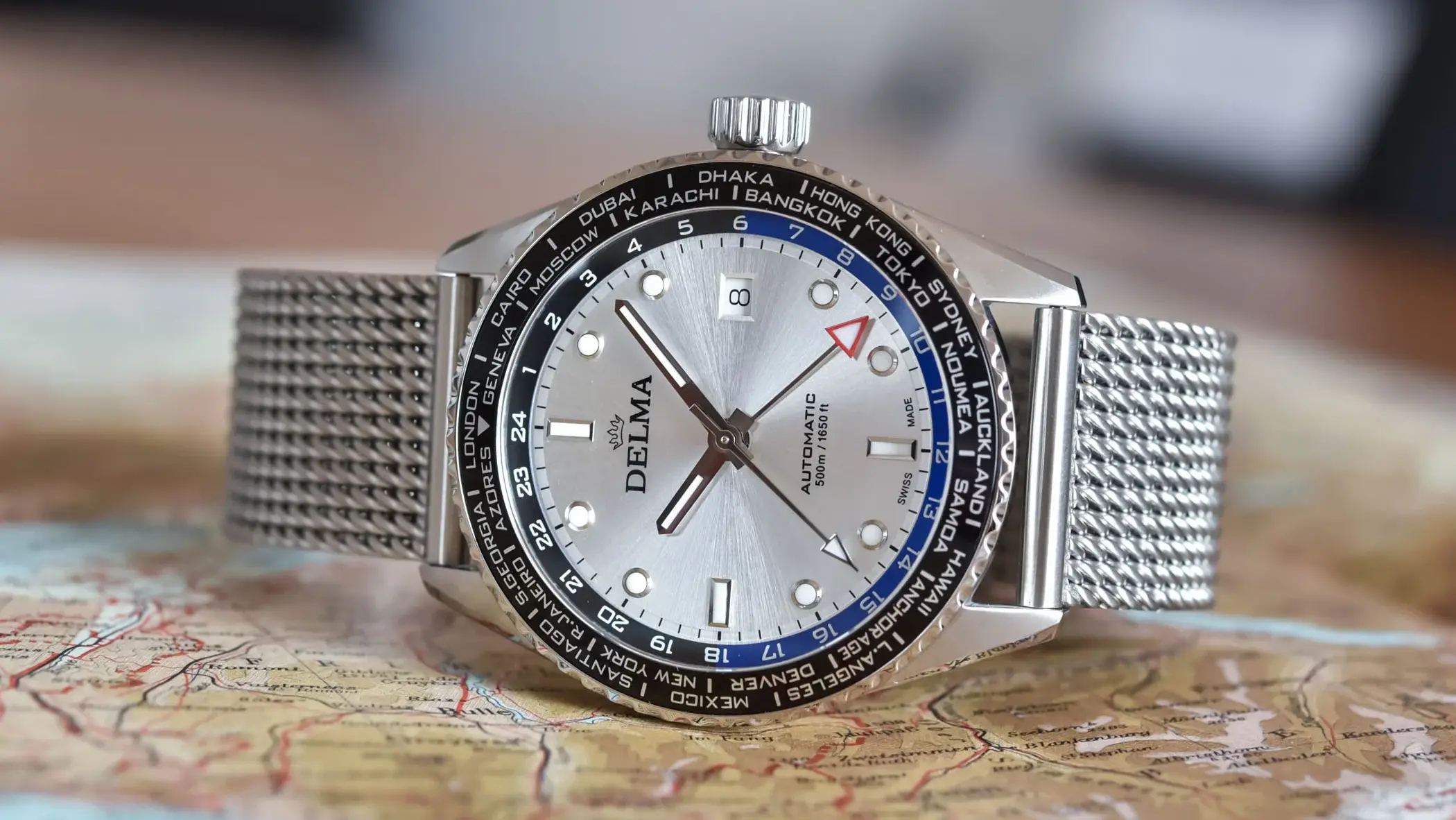
Some world timer watches feature bezels with different cities engraved on them. This is most commonly found in vintage worldtimers, but some modern ones do feature it.
Dual Bezel

Dual bezels do not necessarily mean the watch has 2 bezels, but simply that there is more than one functionality on the bezel. But some watches do feature 2 bezels that can turn independently or one that turns.
Watch Bezel Materials
When it comes to watch bezels, there are several materials that are commonly used. Each material has its own unique set of benefits and drawbacks that make it suitable for certain applications. In this section, we will take a closer look at the most popular materials used for watch bezels.
Stainless Steel
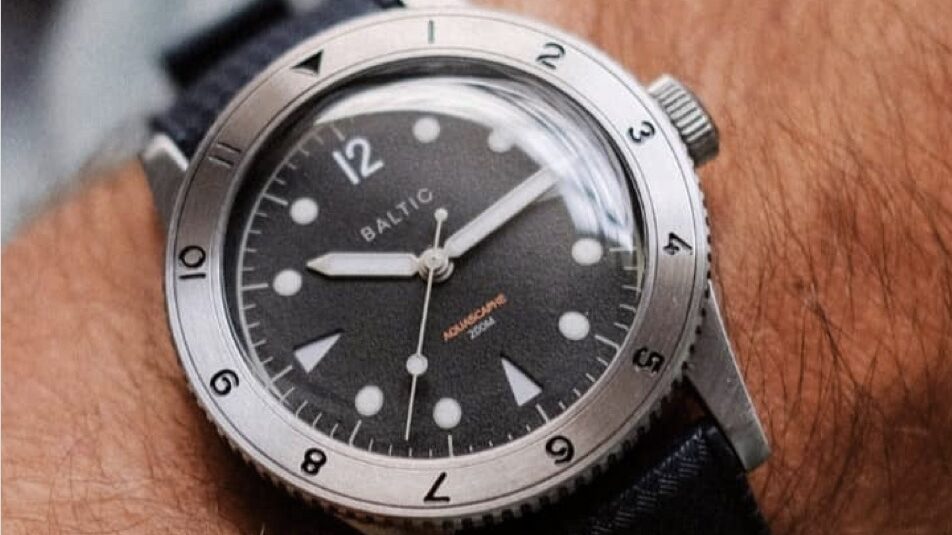
Stainless steel is one of the most common materials used for watch bezels. It is a durable and corrosion-resistant material that can withstand daily wear and tear. Stainless steel is also relatively affordable compared to other materials, making it a popular choice for entry-level watches. However, one of the drawbacks of stainless steel is that it can scratch easily, which can detract from the overall appearance of the watch.
Ceramic
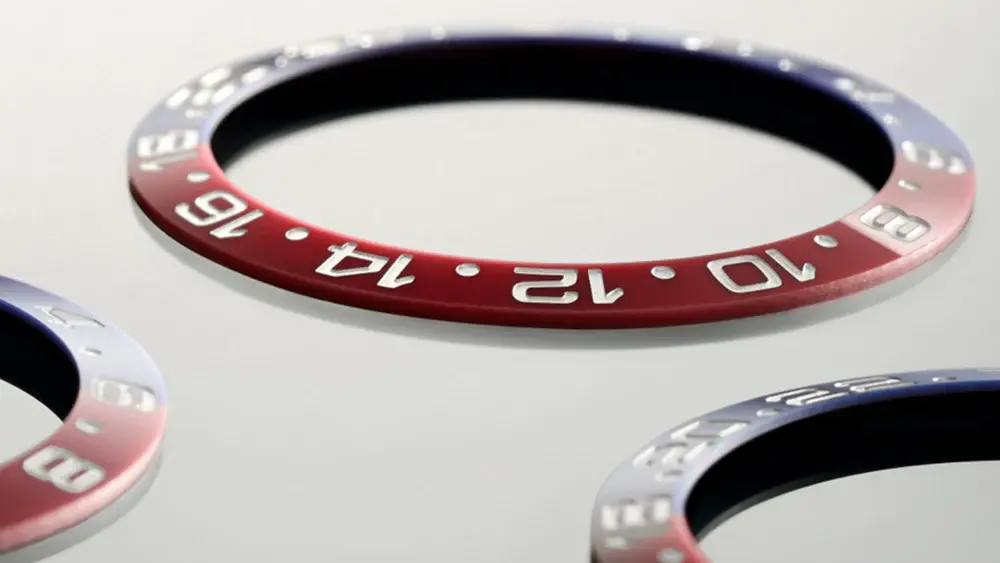
Ceramic is another popular material used for watch bezels. It is a highly scratch-resistant material that can maintain its (sometimes colorful) appearance over time. Ceramic is also lightweight and hypoallergenic.
However, ceramic can be brittle and prone to cracking if dropped or hit with a hard object.
Titanium
Titanium is a lightweight and durable material that is commonly used in high-end watches. It is corrosion-resistant and hypoallergenic, making it a good choice for people with sensitive skin.
Titanium is also highly scratch-resistant, making it a popular choice for sports watches that are designed to withstand rugged use. However, titanium can be more expensive than other materials, which can make it less accessible to some consumers.
Gold
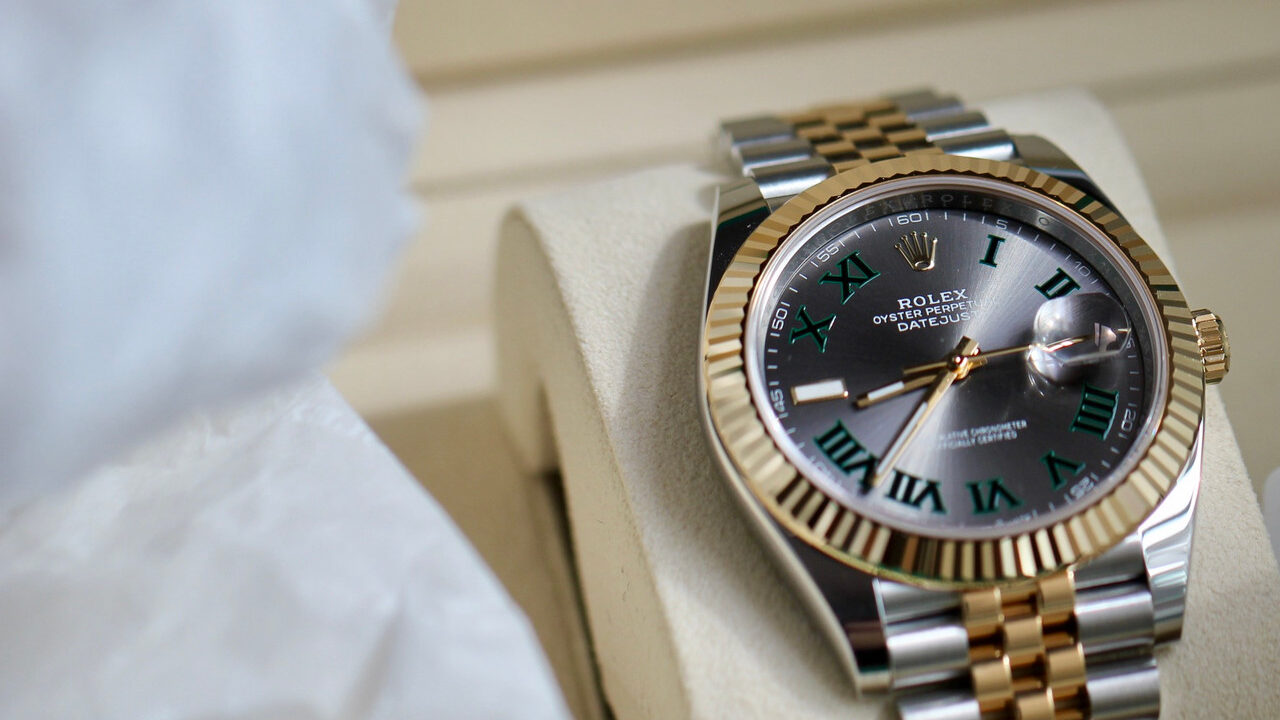
Gold is a luxurious and prestigious material that is often used in high-end watches. It is a soft and malleable material that can be easily shaped and engraved.
Gold is also highly resistant to tarnishing and corrosion, making it a good choice for watches that are meant to be worn for special occasions. However, gold is a heavy material that can make watches feel bulky and uncomfortable to wear for extended periods of time. It is also an expensive material, which can make it less accessible to some consumers.
Platinum
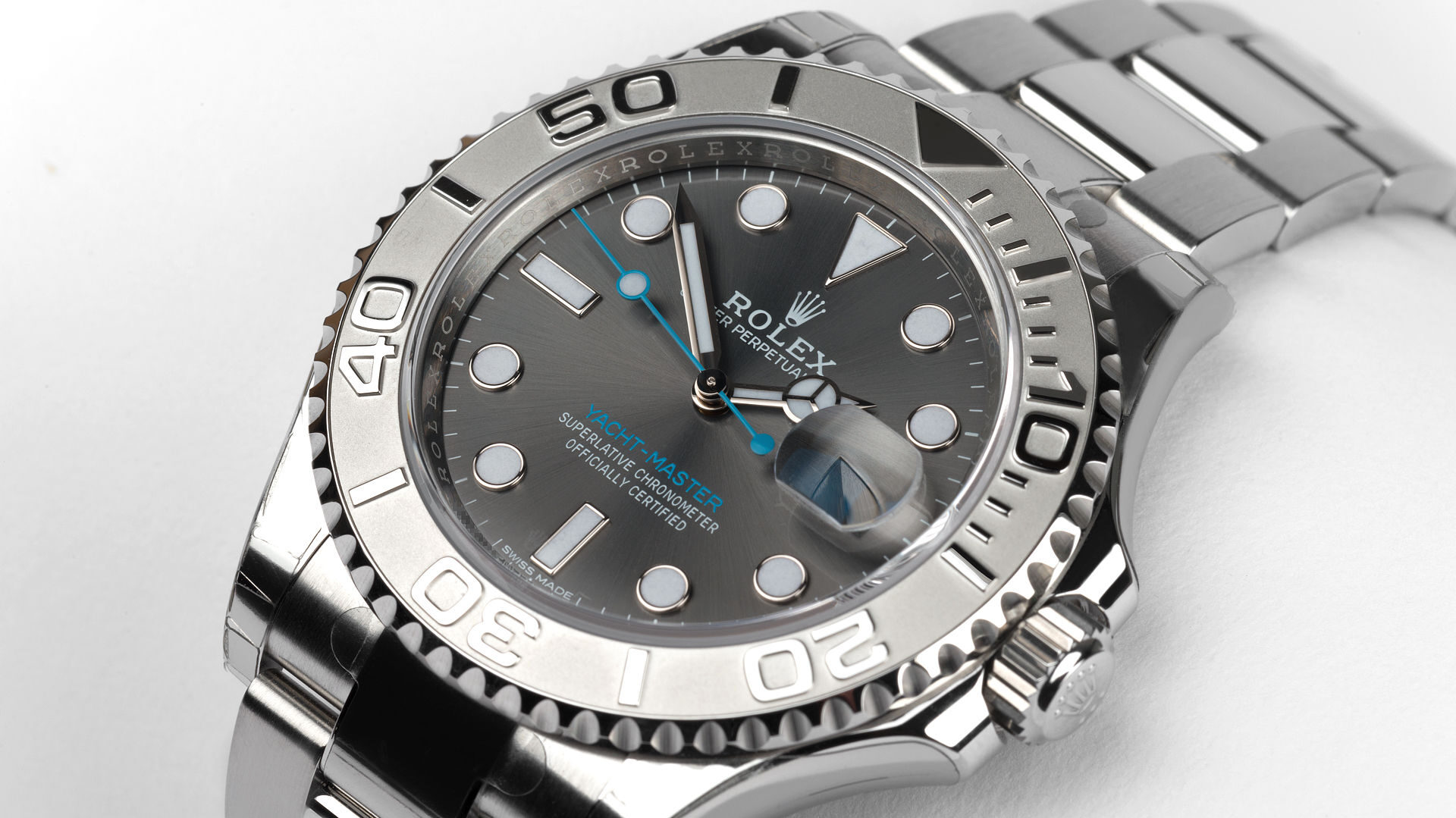
Platinum is another luxurious material that is commonly used in high-end watches. It is a dense and heavy material that is highly resistant to corrosion and tarnishing. Platinum is also hypoallergenic, making it a good choice for people with sensitive skin.
However, platinum is an expensive material that can significantly increase the price of a watch. It is also very hard to work with and require special tools that need replacement quite often.
Aluminum
Aluminum is a lightweight and affordable material that is commonly used in sports watches. It is a corrosion-resistant material that can withstand exposure to water and sweat.
Aluminum is also highly malleable, making it easy to shape and engrave. However, aluminum is a relatively soft material that can scratch easily, which can detract from the overall appearance of the watch.
Most watches today are in steel, not aluminum.
Diamond bezel
Most diamond bezels are set on a steel base, so technically the bezel is not made of diamonds. It is however very distinctive and deserves it’s own heading in this guide 🙂
Popular Watch Brands and their Bezels
Watches have evolved from being mere time-telling devices to becoming a fashion statement. In this section, we will take a closer look at the bezels of some of the most popular watch brands in the market today.
Rolex and its Iconic Bezels
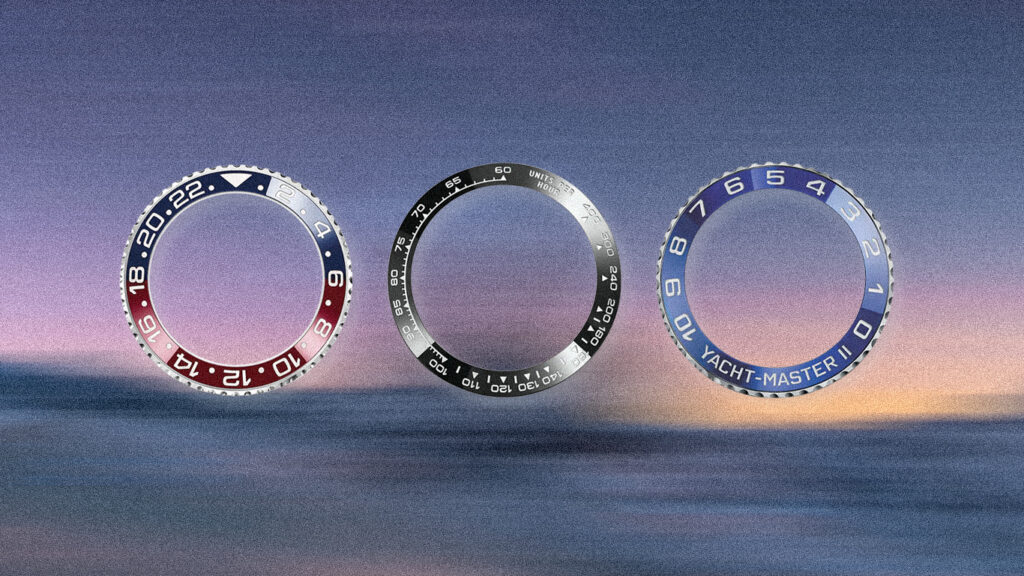
Rolex is a brand known for its iconic designs and exceptional quality. One of the most recognizable features of a Rolex watch is its bezel. Rolex has a range of bezels that serve different purposes.
For instance, the Submariner’s bezel is designed to measure elapsed time, while the GMT-Master’s bezel is used to track time in different time zones. Rolex’s bezels are known for their durability, precision, and ease of use.
They are made from high-quality materials such as ceramic, gold, and stainless steel, and are designed to withstand the rigors of everyday wear.
Omega and its Innovative Bezels

Omega is a brand that has always been at the forefront of innovation. Its bezels are no exception. Omega’s bezels are designed to serve different purposes, from measuring elapsed time to tracking dive time.
The brand’s most innovative bezel is the Liquidmetal bezel, which is made from a combination of zirconium, titanium, copper, and nickel. They fuse metal into the ceramic (see this video for more info).
Omega’s bezels are also designed to be easy to use, with clear markings and a smooth rotation.
Breitling and its Functional Bezels
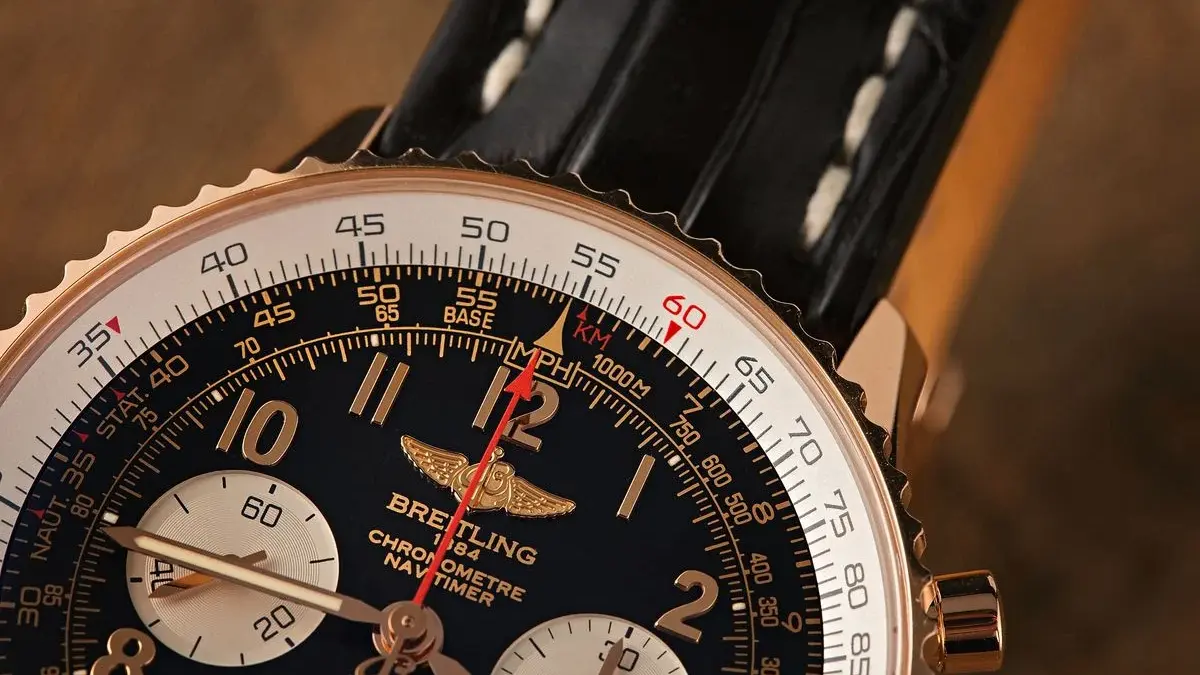
Breitling is a brand known for its functional designs. Its bezels are no exception. Breitling’s bezels are designed to serve different purposes, from measuring elapsed time to calculating fuel consumption.
The brand’s most popular bezel is the slide rule bezel on their Navitimer Collection, which is used to perform complex calculations such as multiplication, division, and conversion.
I actually own a Breitling Navitimer and can highly recommend them!
TAG Heuer and its Versatile Bezels
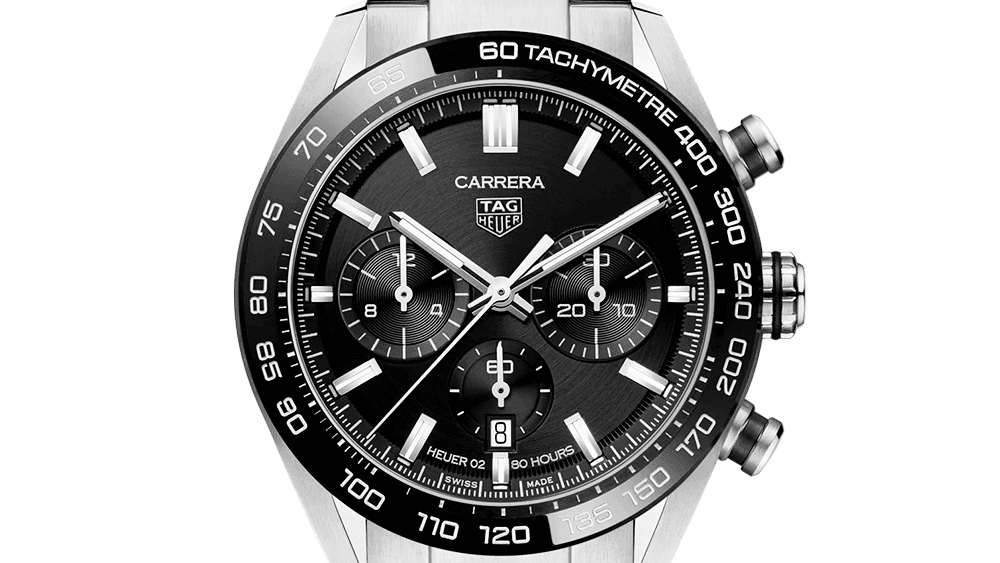
TAG Heuer is a brand known for its versatility. Its bezels are no exception. TAG Heuer’s bezels are designed to serve different purposes, from measuring elapsed time to tracking dive time.
The brand’s most versatile bezel is the tachymeter bezel, which is used to measure speed. This bezel is also used to calculate distance and fuel consumption.
Seiko and its Affordable Bezels
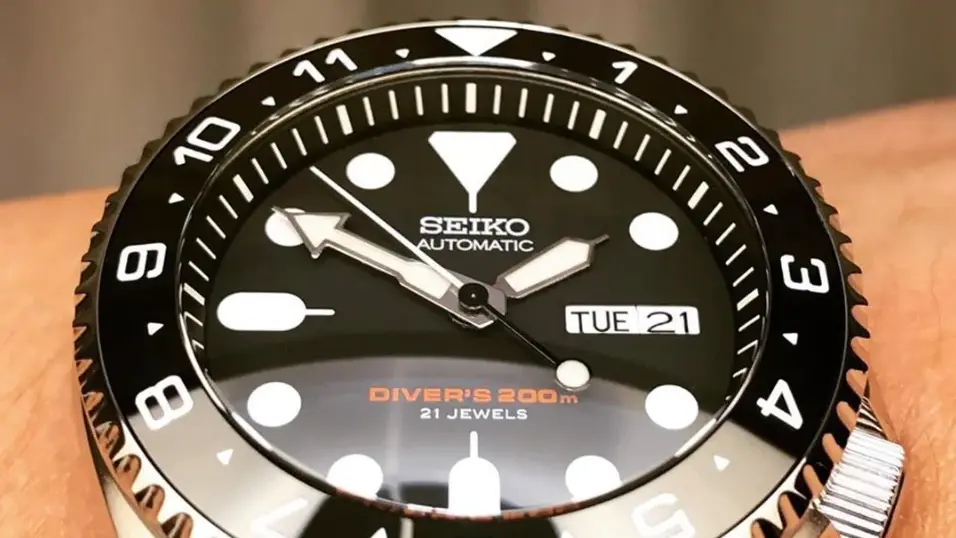
Seiko is a brand known for its affordability. Its bezels are no exception. Seiko’s bezels are designed to serve different purposes, from measuring elapsed time to tracking dive time.
The brand’s most affordable bezel is the rotating bezel, which is used to measure elapsed time.
Casio and its Digital Bezels

Casio is a brand known for its digital watches. Its bezels are no exception but they differ severely from all the other we have seen in this guide. They are usually designed to protect the watch and show button functions.
They are made from high-quality materials such as resin and stainless steel.
How to Care for Your Watch Bezel
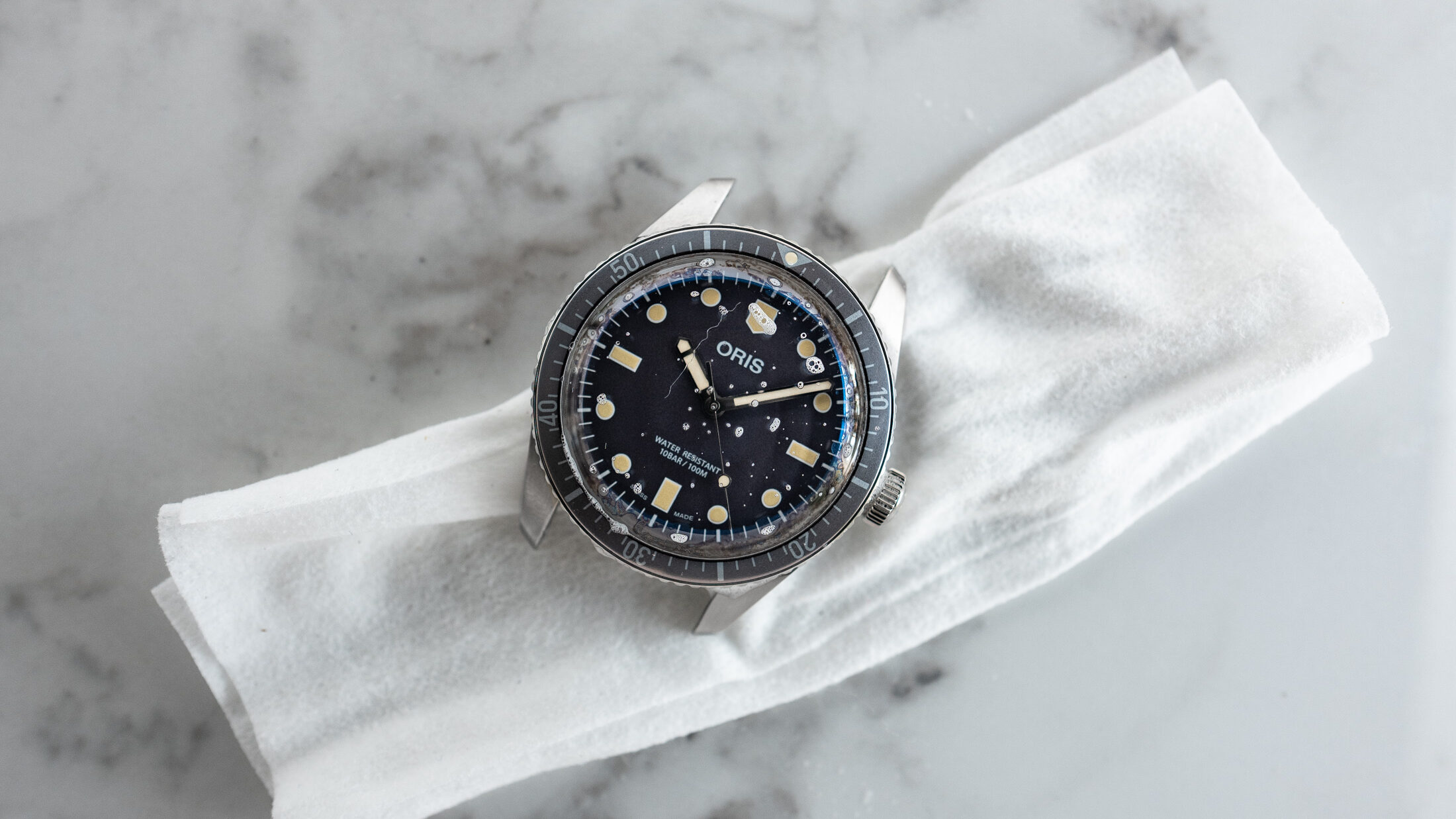
The bezel of a watch is not only a functional component but also a decorative one. It protects the watch face and adds to the overall aesthetic appeal of the timepiece. However, like any other part of the watch, the bezel requires proper care and maintenance to ensure its longevity and performance. In this section, we will discuss the best practices for cleaning and maintaining different types of bezels to keep them looking their best.
Cleaning Tips for Different Materials
The first step in caring for your watch bezel is to clean it regularly. The cleaning process will vary depending on the material of the bezel. Here are some tips for cleaning different types of bezels:
- Stainless Steel Bezels: Stainless steel bezels are the most common type of bezel and are relatively easy to clean.
Start by wiping the bezel with a soft, damp cloth to remove any dirt or grime. For tougher stains, use a mild soap and water solution. Avoid using abrasive cleaners or scrubbers as they can scratch the surface of the bezel. - Ceramic Bezels: Ceramic bezels are scratch-resistant and durable, but they require special care to maintain their appearance.
To clean a ceramic bezel, use a soft-bristled toothbrush and a mild soap and water solution. Gently scrub the bezel in a circular motion, being careful not to scratch the surface. Rinse the bezel with water and dry it with a soft cloth. - Gold Bezels (and other precious metals): Gold bezels are delicate and require gentle cleaning.
Use a soft, damp cloth to wipe the bezel and remove any dirt or grime. For tougher stains, use a mild soap and water solution. Avoid using abrasive cleaners or scrubbers as they can scratch the surface of the bezel. To maintain the shine of the gold, use a gold polishing cloth.
Maintenance and cleaning of Different Types of Bezels
In addition to regular cleaning, different types of bezels require specific maintenance to ensure their longevity and performance. Here are some tips for maintaining different types of bezels:
Unidirectional Rotating Bezels
Unidirectional rotating bezels are commonly found on dive watches and usually use a simple spring systems with teeth to hold it in place and allow for fixed rotation (the clicking you hear is the teeth).
TIP: If your rotating bezel becomes tight or stuck, a bath of warm soapy water can help do the trick as it is most likely dirt and grit that got stuck under the bezel. Simply turn the bezel a few times under the water.
Do not use grease or oil on your rotating bezel mechanism, as it will more dirt collect under it!
If the bezel becomes misaligned, it can sometimes be adjusted by a professional watchmaker.
Fixed Bezels
Fixed bezels are not designed to rotate and are commonly found on dress watches. To maintain the appearance of the bezel, it should be protected from scratches and dings. Avoid wearing the watch during activities that may cause damage to the bezel, such as sports or manual labor.
Avoiding Damage and Protecting Your Bezel from Wear and Tear
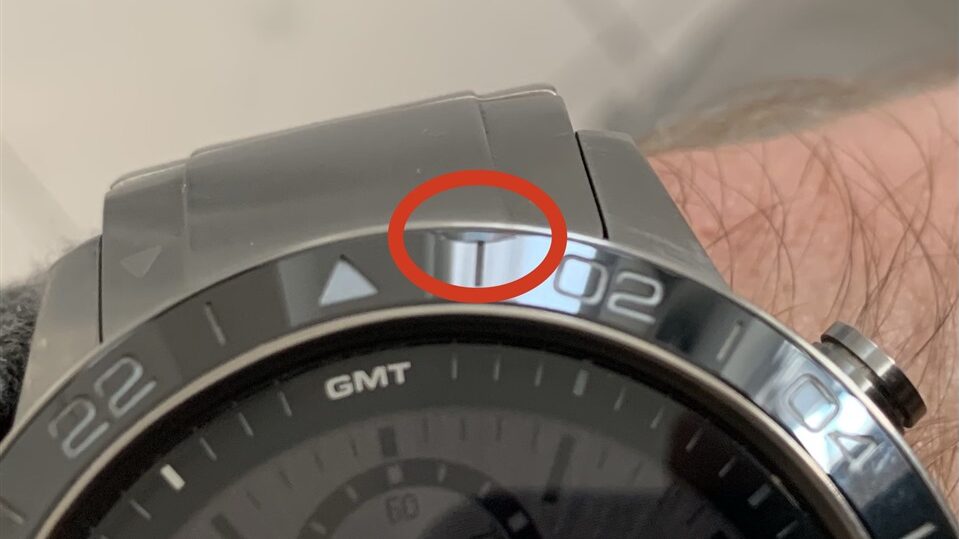
Prevention is the best way to protect your watch bezel from wear and tear. Here are some tips for avoiding damage and protecting your bezel:
- Avoid Exposure to Harsh Chemicals: Harsh chemicals, such as chlorine and bleach, can damage the surface of the bezel. Avoid wearing the watch during activities that involve exposure to these chemicals.
- Store Your Watch Properly: When not in use, store your watch in a protective case or pouch to prevent scratches and dings and dust and filth gathering.
- Avoid Extreme Temperatures: Extreme temperatures can cause damage to the watch bezel. Avoid wearing the watch during activities that involve exposure to extreme temperatures, such as hot tubs or saunas.
- Watch out for knocks, especially with Ceramic bezels. They can easily shatter or lose a piece.
In conclusion, proper care and maintenance of your watch bezel will ensure its longevity and performance. Regular cleaning, specific maintenance, and prevention of damage are key to keeping your watch bezel looking its best. By following these tips, you can enjoy your timepiece for years to come.
The Future of Watch Bezels
Watch bezels have come a long way since their inception, and with advancements in technology, the future of watch bezels looks promising. In this section, we will explore the impact of technology on bezel design and functionality, the use of new materials, and innovative designs that have the potential to revolutionize the watch industry.
New materials being used and their benefits and drawbacks:
The use of new materials in watch bezels has also been a significant area of development. One of the most popular materials being used is ceramic, which is known for its durability and scratch-resistant properties. Ceramic bezels are also highly resistant to corrosion and can withstand extreme temperatures, making them an ideal choice for outdoor enthusiasts.
Another material that is gaining popularity is carbon fiber. Carbon fiber is known for its lightweight and robust properties, making it an excellent choice for sports watches. However, carbon fiber can be expensive, and its production process is complex, making it less accessible to the mass market.
New features
Innovative designs are also changing the way we think about watch bezels. One such design is the rotating bezel, which has been around for decades but is still being refined and improved.
Bezel locking is one feature that is slowly coming back, just like inner-rotating bezels. These are not new features, but i see them coming on more and more watches like the Longines Legend Diver or the revived Omega Ploprof.
Choosing the Right Bezel
When it comes to choosing a watch bezel, personal preferences and needs should be taken into consideration. For example, if you are an avid diver, a unidirectional bezel with clear markings and a luminous insert may be a must-have feature. On the other hand, if you prefer a more understated look, a simple polished bezel may be more suitable.
It is also important to consider the material of the bezel. Stainless steel is a popular choice due to its durability and resistance to corrosion, while ceramic bezels are known for their scratch-resistant properties. However, it is worth noting that ceramic bezels can be more prone to cracking or shattering if dropped.
Conclusion
In conclusion, the watch bezel is a crucial component of a watch that should not be overlooked. Whether you are looking for a functional tool or a stylish accessory, there is a bezel out there that can meet your needs. By considering your personal preferences and taking proper care of your watch, you can ensure that your bezel will continue to serve you well for years to come.

